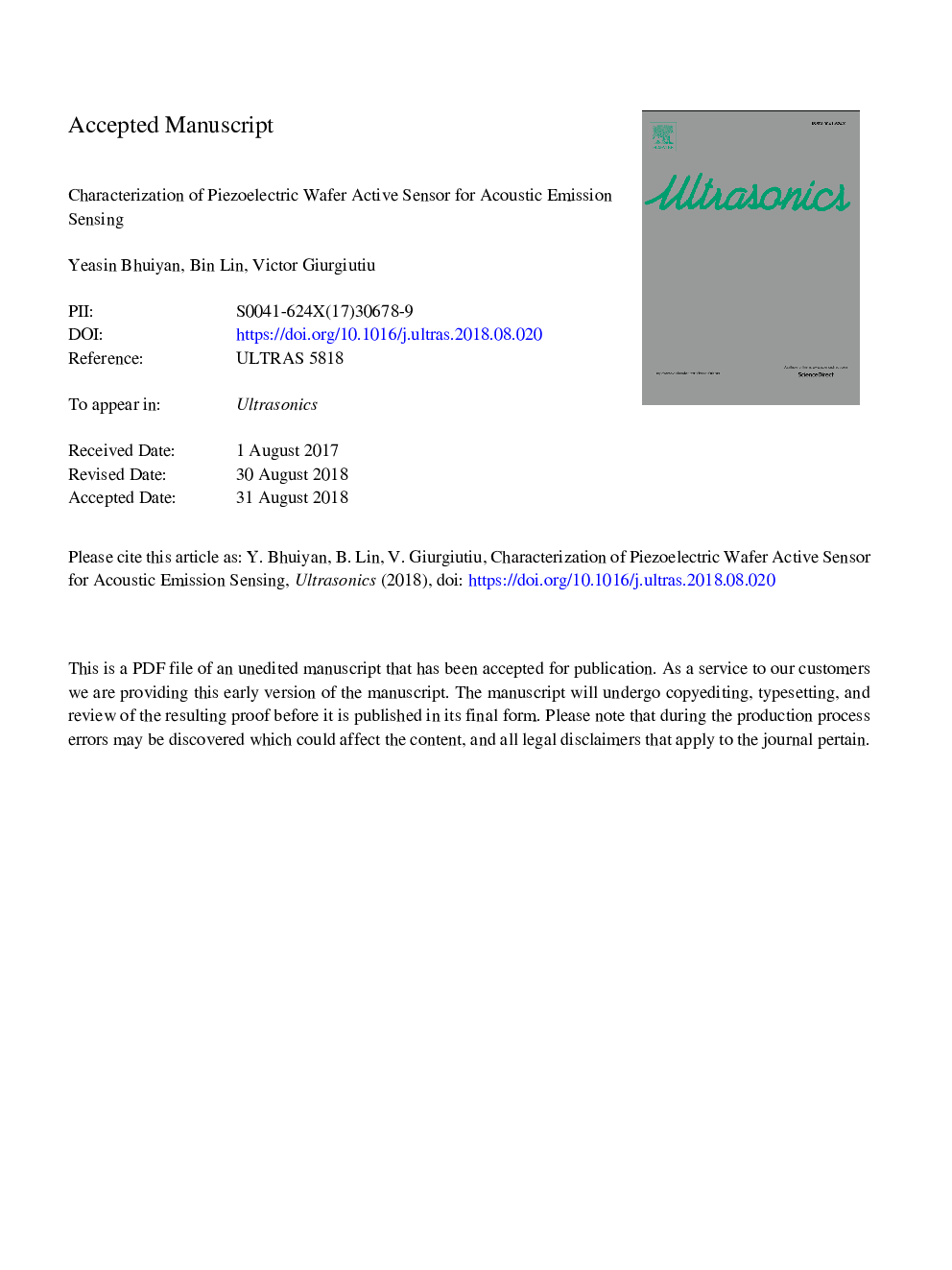| Article ID | Journal | Published Year | Pages | File Type |
|---|---|---|---|---|
| 10149334 | Ultrasonics | 2019 | 37 Pages |
Abstract
In this article, a new avenue of using the piezoelectric wafer active sensor (PWAS) for detecting the fatigue crack generated acoustic emission (AE) signals is presented. In-situ AE-fatigue experiments were conducted using PWAS along with two commercially available AE sensors. It has been shown that the PWAS and existing AE sensors successfully captured the AE signals from the fatigue crack growth in a thin aerospace specimen. Two experiments were conducted using the PWAS with each of the commercial AE sensors. For each experiment, two AE analyses were performed: (1) the hit-based analysis, (2) the waveform-based analysis. The fatigue loading was synchronized with the AE measurements. This allowed comparing the AE hits due to a particular AE event captured by PWAS and the other sensors. All the sensors showed a very similar pattern of AE hits as observed from the hit-based analysis. The AE waveform-based analysis was used to compare the waveforms and their frequency spectra captured by the three sensors. The commercial PICO showed ringing in the AE signals and showed a weak response in high-frequency region. The commercial S9225 had better signal-to-noise ratio but it also showed a weak response in high-frequency region. It was found that all sensors captured the low-frequency flexural modes of the guided acoustic waves. However, the high-frequency acoustic wave signals were predominately captured by the PWAS. The AE waveform-based analysis provided more insight of the AE source and guided wave propagation modes.
Related Topics
Physical Sciences and Engineering
Physics and Astronomy
Acoustics and Ultrasonics
Authors
Yeasin Bhuiyan, Bin Lin, Victor Giurgiutiu,
